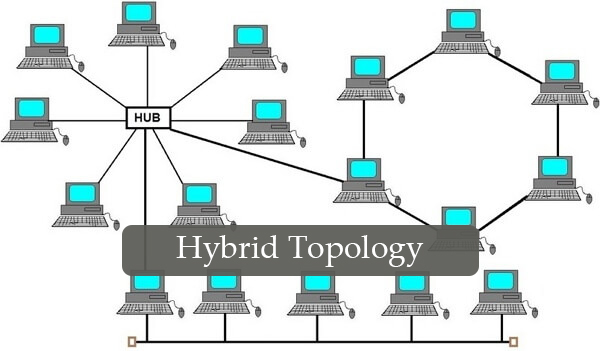A hybrid topology is a combination of two or more topologies. For example, if you combine Ring and star topology to make bigger network then it will be called hybrid network or hybrid topology. Different topologies are combined via the hubs and switches.

Most common hybrid topologies include star-bus and star-ring network.
Features of hybrid topology:
1) Flexible in size: New topologies and nodes can be added and removed from the network easily.
2) Reliable: If there occurs any error in the network then it is detected easily and that network device or node can be exchanged with a new device or node.
3) The characteristics of each topology are combined in the hybrid network and weakness of different topologies are eliminated.
Drawbacks of hybrid topology:
1) The hubs which are attached to combine different topologies are expensive. These hubs are different from normal hubs and are more intelligent in performance.
2) Designing hybrid networks is a complex process. Hybrid networks are difficult in installing and configuring.
3) If the backbone of the network is damaged then network performance is affected also.
4) A hybrid topology is used in making large networks so it needs more cables and cooling system. These types of networks also need sophisticated network devices.
Examples of hybrid topology:
A hybrid topology is used in various places including:-
- School
- Business
- Office
- In university campuses
- Research organizations
- Multi-national offices
- Banks
- Automated industry




